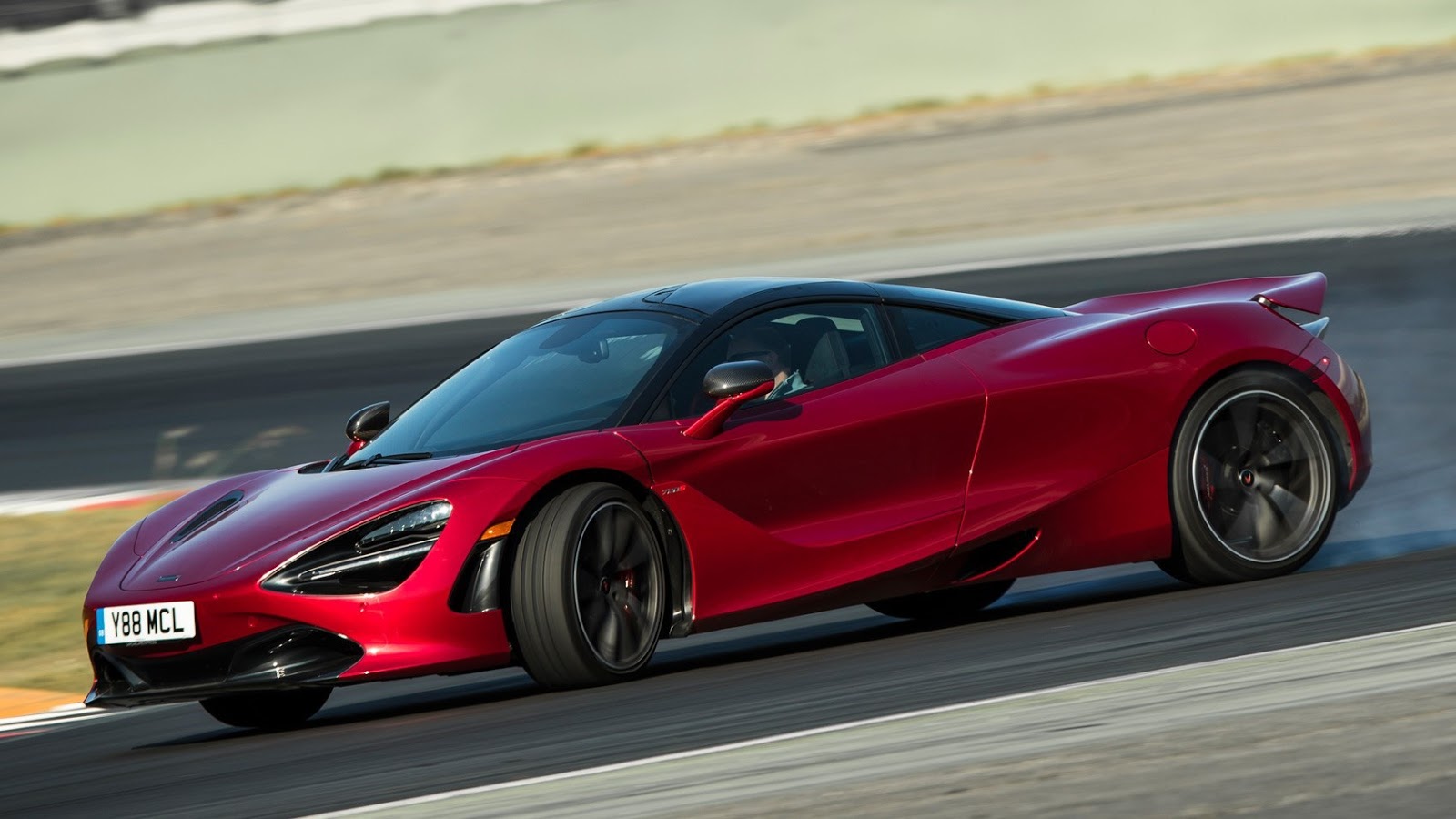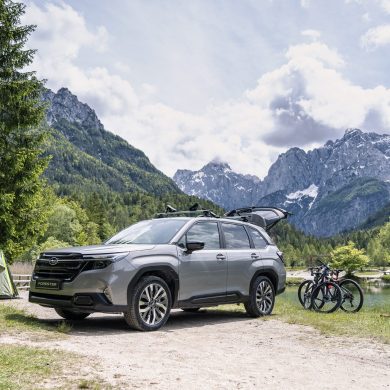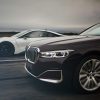From the first moment McLaren unveiled the 720S, it drew the world's attention to it. In the first instance, it impressed with its design, which is not only highly impressive, but also perfectly functional. Then came the tests and comparisons, where it impressed again, this time with its performance, crushing its competition and delivering more than what it claims on paper, as if 720 hp, 770 Nm, 2.9 seconds for the sprint to 100 ha.p.h. and 341 mph weren't enough. Then it proved that McLaren learned the mistakes from the 12C and 650S, corrected them and improved them, giving a completely new, improved car in every aspect. Now, it's the moment everyone has been waiting for: The launch of the 720S Spider. A car that has to offer everything the Coupe has to offer, but this time with that "something" extra, which is the satisfaction of driving an open-top car.
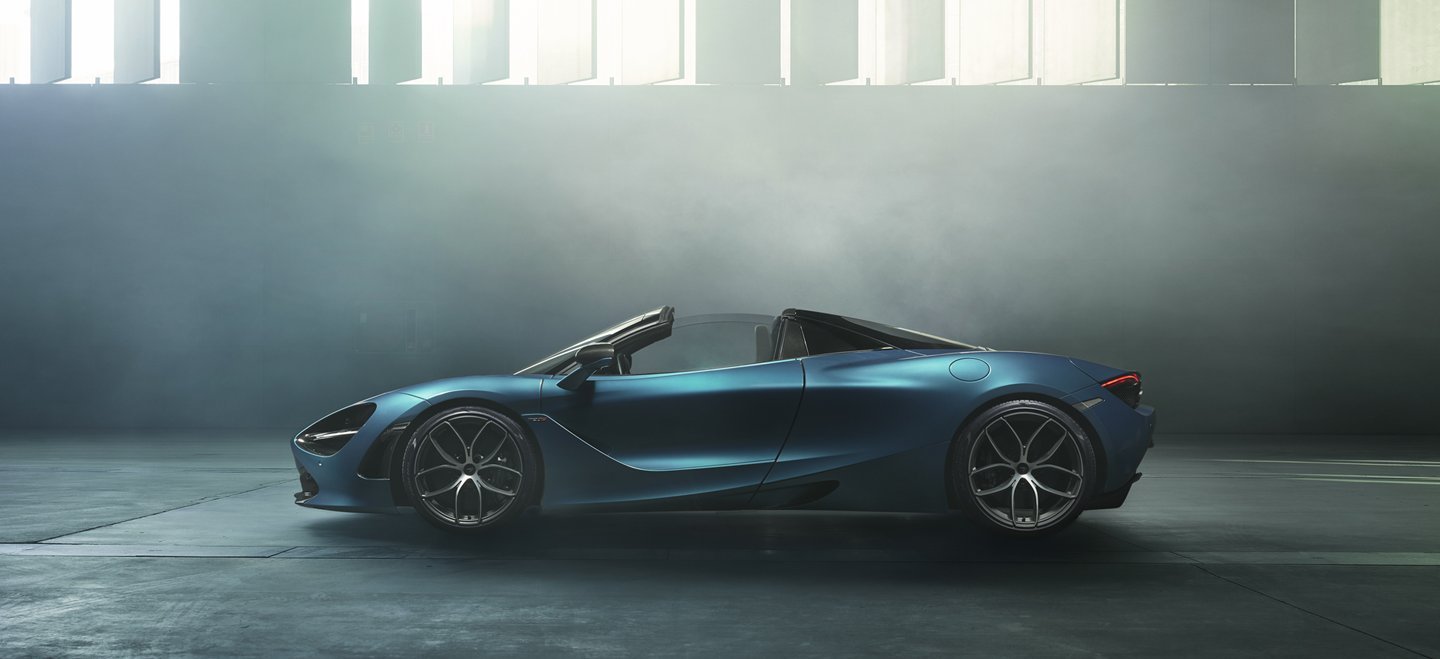
By Alexandros Fertakis
On the design front, the 720S Spider retains the so-called "double-skin" design from the coupe, where, according to McLaren, the exterior of the car is split in two from the doors and rear. The interior encloses the cabin and engine bay, while the exterior continues, gradually increasing the gap with the interior. The reason, is to create a gradually increasing and aerodynamically functional vacuum, which directs the airflow to the rear of the car, where it is utilized to provide cooling to the car's radiators.
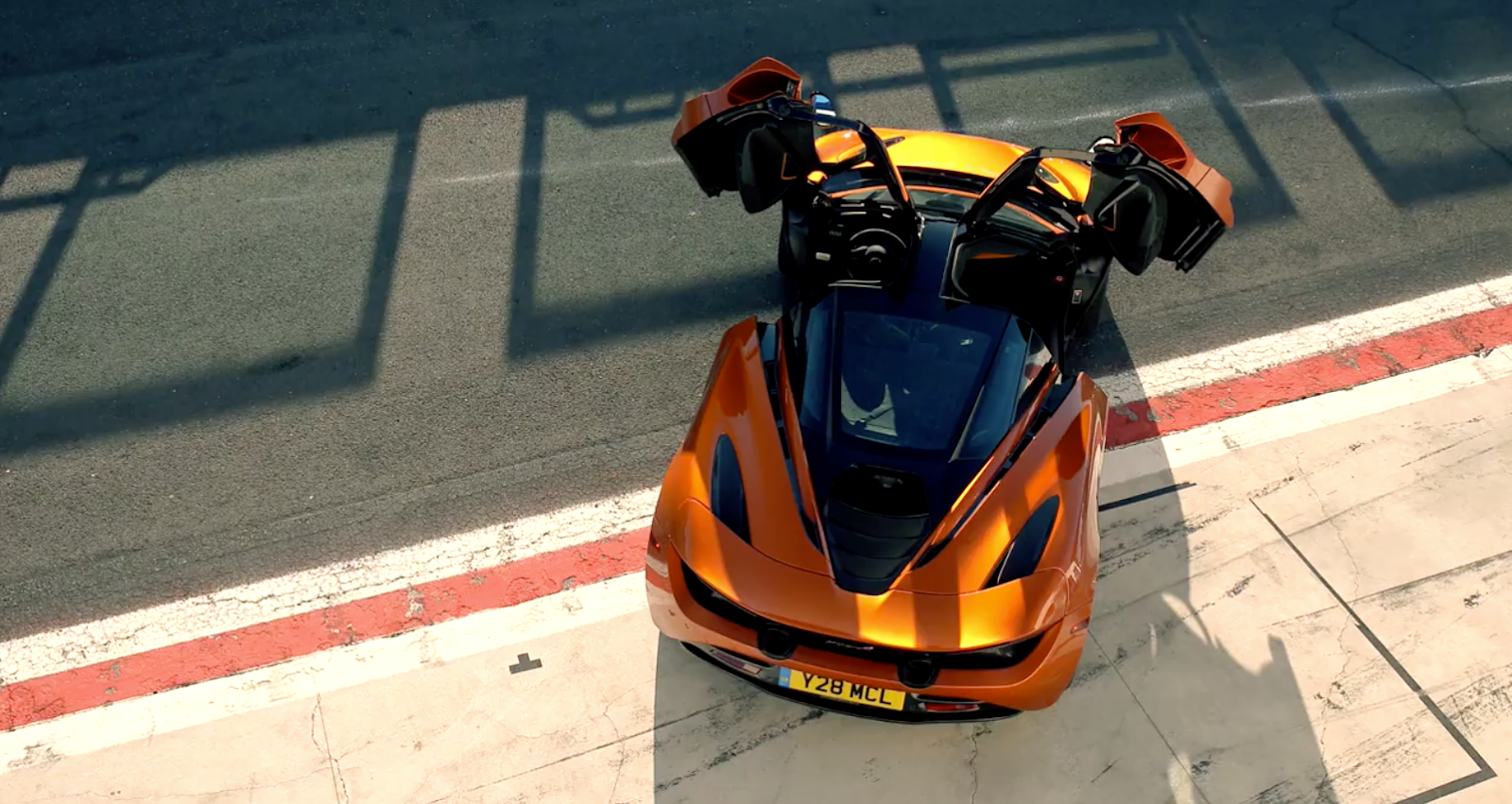
The Spider uses the same chassis, Monocage II-S, as the coupe, which is not only very light but also very rigid. This results in no need for additional reinforcement points in the chassis due to the absence of a fixed roof, keeping the weight at the lowest possible price. The roof, for its part, weighs little more and is fully mechanically retractable, with the folding taking just 11 seconds to complete. But, of course, McLaren couldn't resist adding a detail that will make a difference to the competition. That's why it created a roof that, instead of an aluminium or carbon fibre cover on top, has an electrochromic glass whose darkness changes depending on the current that passes through it (a technology that Mercedes Benz had first fitted to the SL Class), thus varying its darkness and, by extension, the light that passes through it.
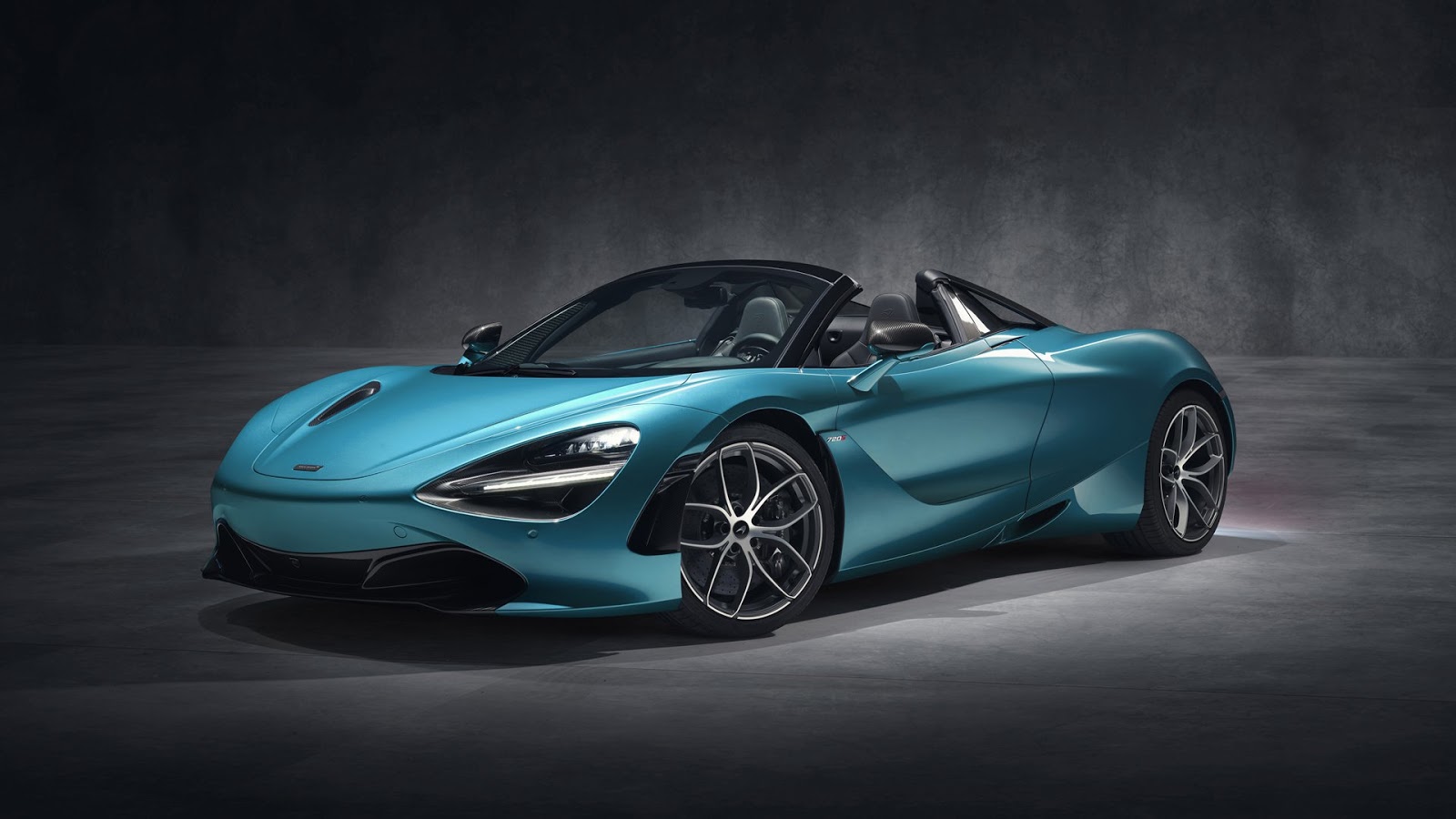
So even with the roof closed, one can still enjoy the sunlight. Of course, McLaren couldn't help but keep its signature design element, its "Dihedral" doors. On the 720S, they have been improved in design to create an even wider opening, making it easier to get in and out of the cabin, taking up less space in order to open fully. In addition, they now have the "soft close" function as standard, which not only closes them without "slamming", but also closes them more tightly in order, as the company itself says, "to close them in an elegant way, creating a tighter contact, which reduces wind noise at high speeds".

But the innovations don't stop there. In the closed version, the rear pillars are very slim, being made of carbon fibre, and there is an extra glass on each side, which helps a lot with good visibility, in what is usually a blind spot in cars of this class. And for this, McLaren has come up with a solution. The third pillars are made of a clear durable material, which not only helps support the roof section and directs air towards the centre at the rear where it is utilised for engine cooling, but maintains visibility by not creating a blind spot, improving aerodynamics and the vertical load generated without increasing aerodynamic drag. Clever, isn't it?
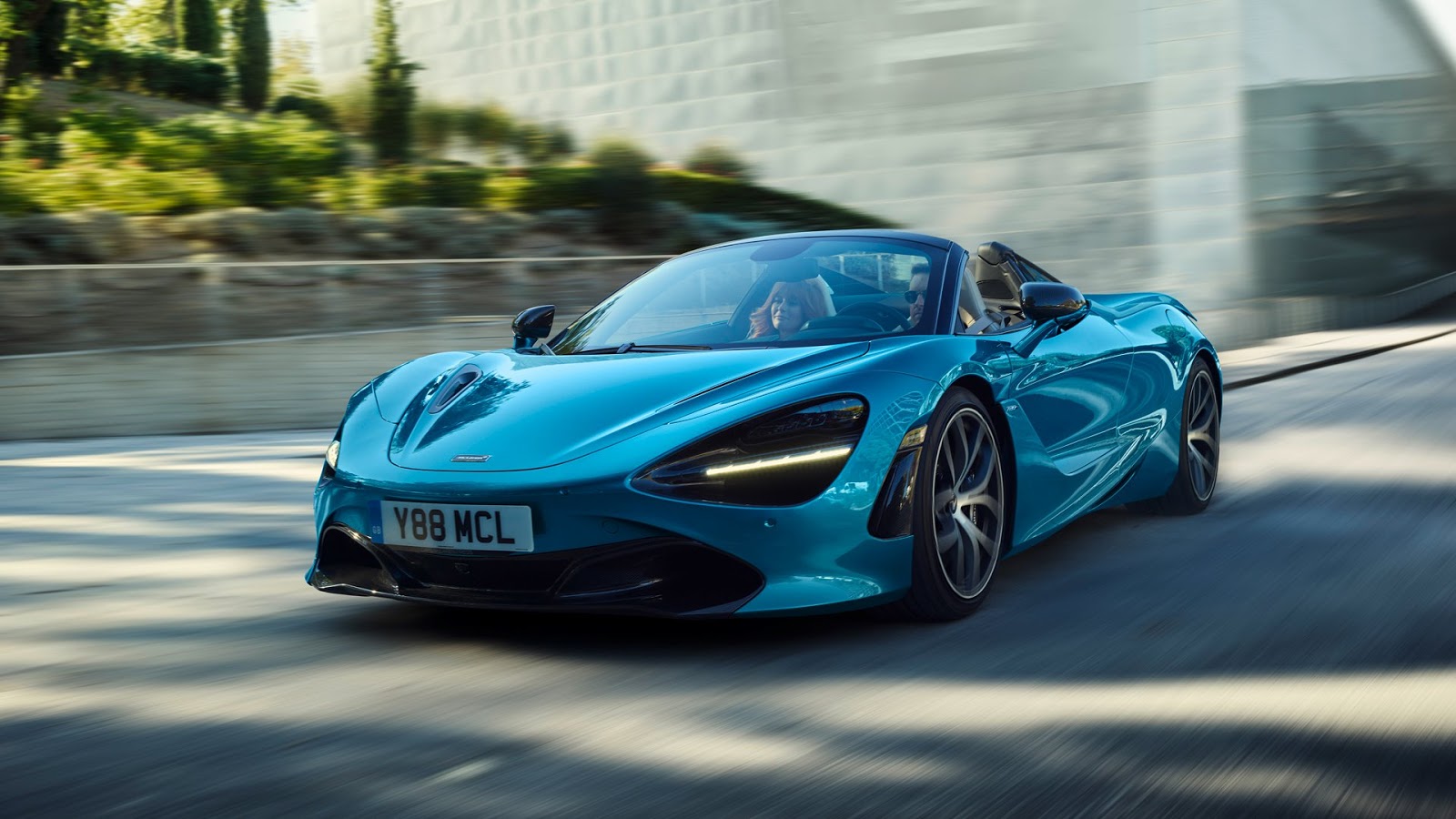
The interior of the 720S follows the same philosophy as the exterior. Minimalist design, with everything in the right place, with no unnecessary elements. Opening the door and sitting in the driver's seat, the first thing one sees at first glance is the digital folding dashboard display. In the centre, there is the display for the entertainment system, climate control and some of the car's functions, next to it are the two characteristic buttons of the Active Dynamics Panel, H and P (Handling and Powertrain respectively), and at the bottom, the buttons for operating the roof. All in the middle, in order to be accessible to both passengers, with the top of the console, of course, slightly angled towards the driver's side. Inside, only the finest materials are used, be they leather, Alcantara, carbon fibre or aluminium for the metallic elements.
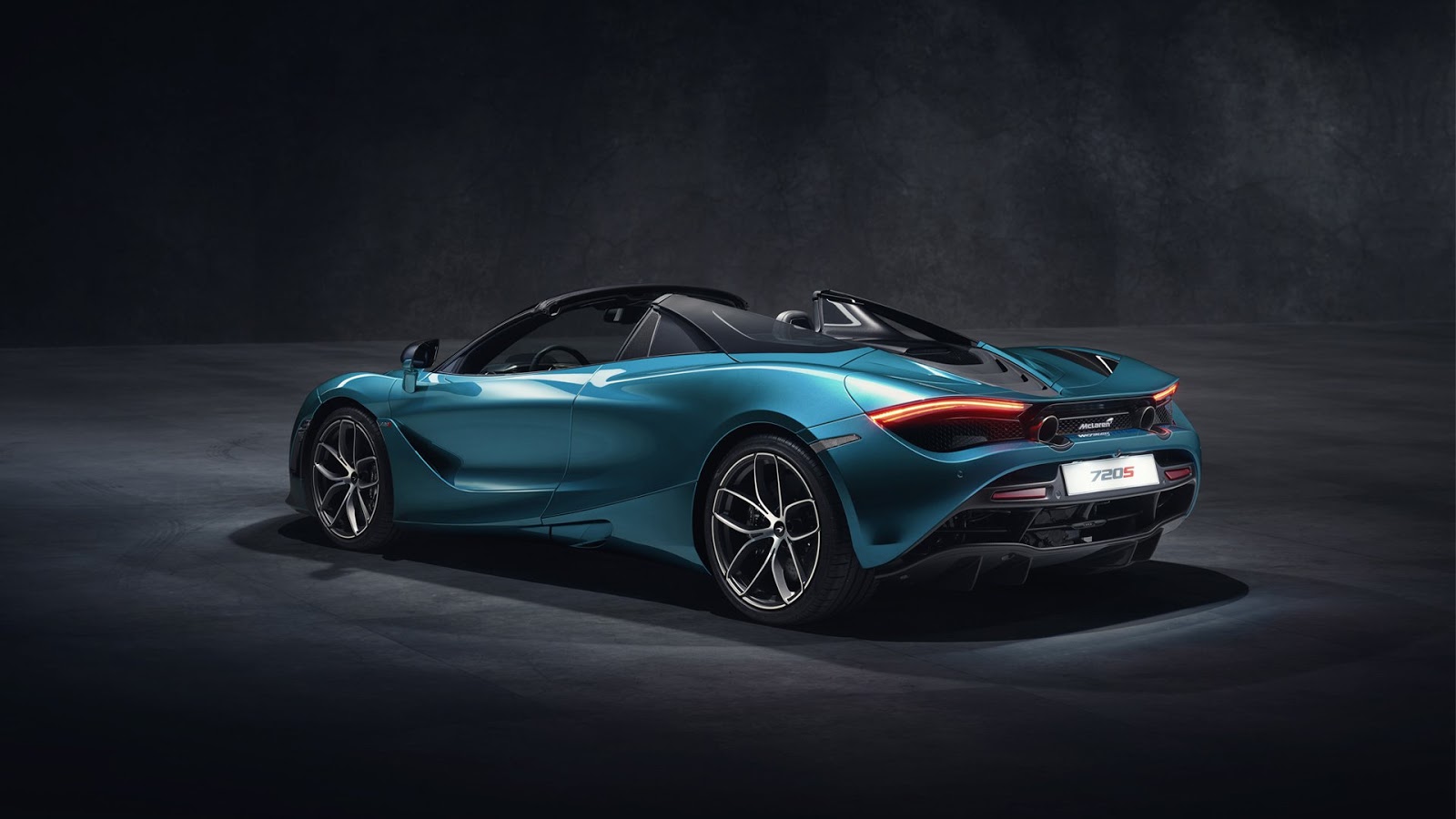
The quality of the materials is top notch, as is the assembly of the entire interior, which is comfortable and functional, which is rather... rare for the category. The "McLaren Driver Interface (MDI)" system technology, displays on both the infotainment system's central screen and the folding dashboard display, every possible piece of information about the car that the driver might want to have in front of him. A 4-speaker system is fitted as standard, the lightest ever fitted to a McLaren, while for music lovers there is also the option of a 12-speaker system, which makes music playback even better, with a weight difference that will never be felt by the average driver. However, the ergonomics don't stop there. In addition to the available space in the front of the car, the closed version has a specially designed parcel shelf luggage set behind the seats.
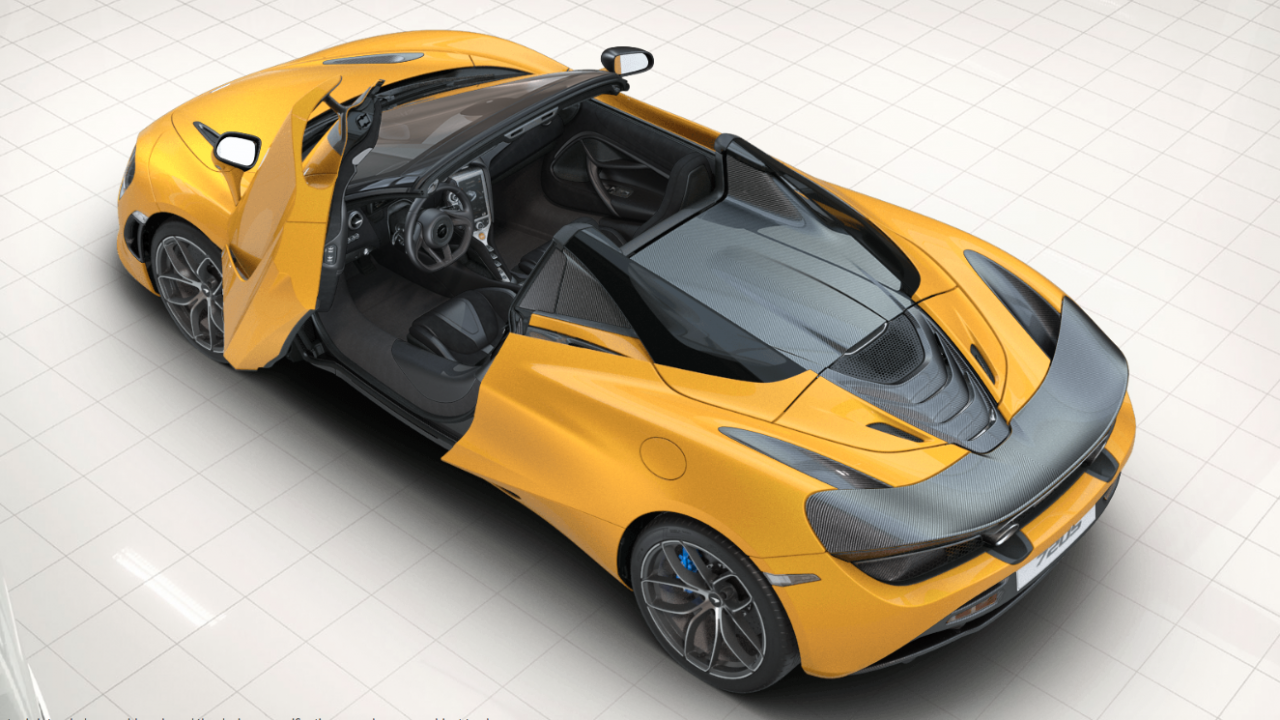
In the open version, this space is taken up by the roof mechanism and the space needed to enter when the roof itself is folded down. McLaren, of course, has come up with a solution for this in order to use it when the roof is closed. At the touch of a button, the roof cover opens and there are two specially designed fabric bags that can hold as many items as that particular space can take. At McLaren, as you can see, nothing goes to waste and there is a solution for everything.
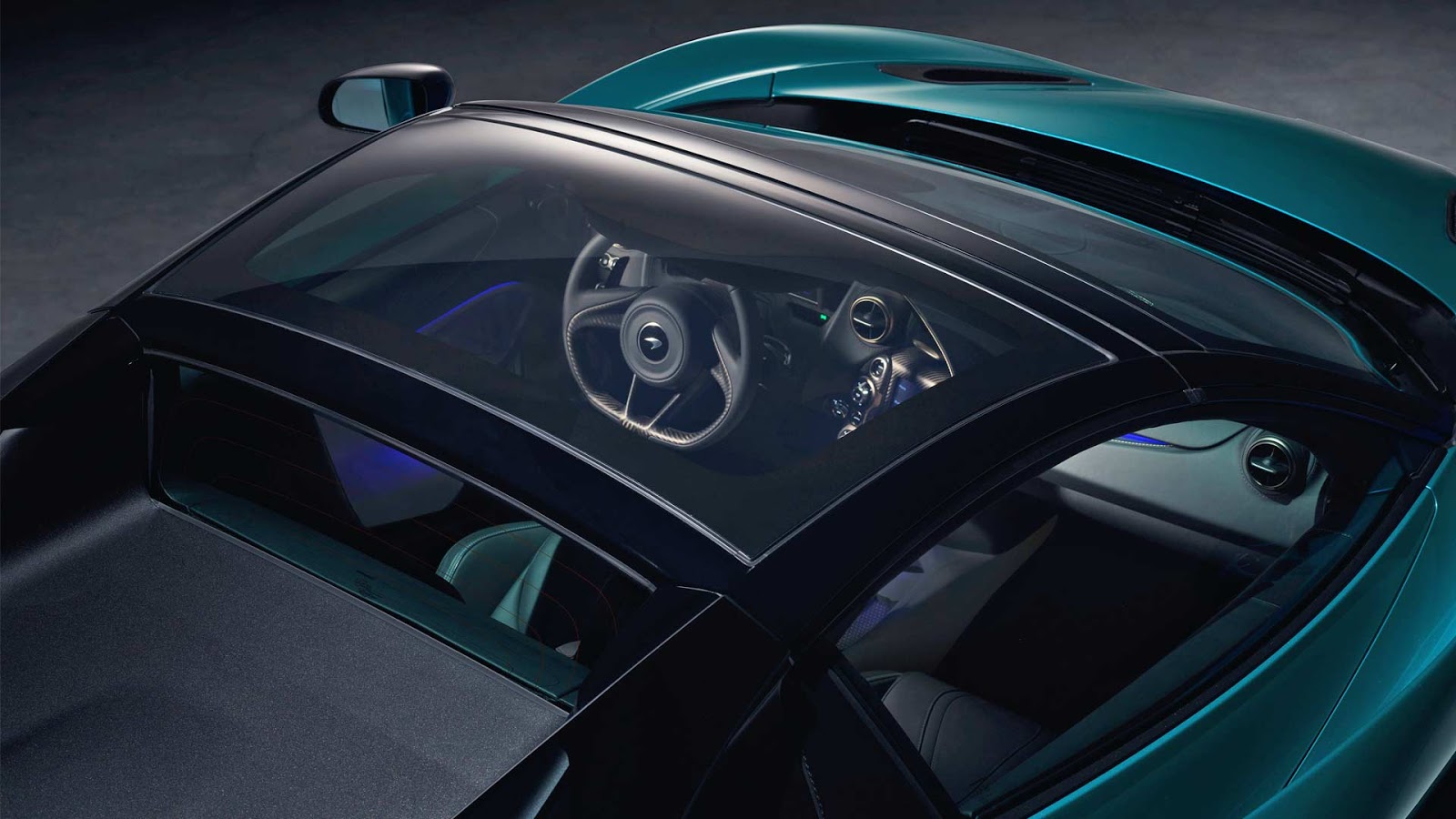
In the mechanical part, the set is the same as the closed version. A new V8 engine, twin-turbocharged, with a capacity of 4000 cc, producing 720 hp and 770Nm of torque. Top speed reaches 341km/h, with the roof down. The numbers, however, continue to be impressive in other metrics as well. 0-100 mph is achieved in just 2.9 seconds, 0-200 in 7.9 seconds. The stopping distance from 100 km/h is realised in just 30 metres, while from 200 km/h, just 118 metres are required. Power is transmitted through a dual-clutch, 7-speed gearbox, with the distribution being carried out through a torque vectoring system rather than a conventional limited-slip differential. The brakes are ceramic, according to some reports this is a design upgraded version of those on the P1, while others say it's a softer version of those on the Senna. Either way, they are highly efficient, which is evident in the deceleration measurements. Through the Active Dynamics Panel, located inside, the driver can individually adjust the settings for the suspension and the engine-transmission set-up, via the H(andling) and P(powertrain) switches respectively.
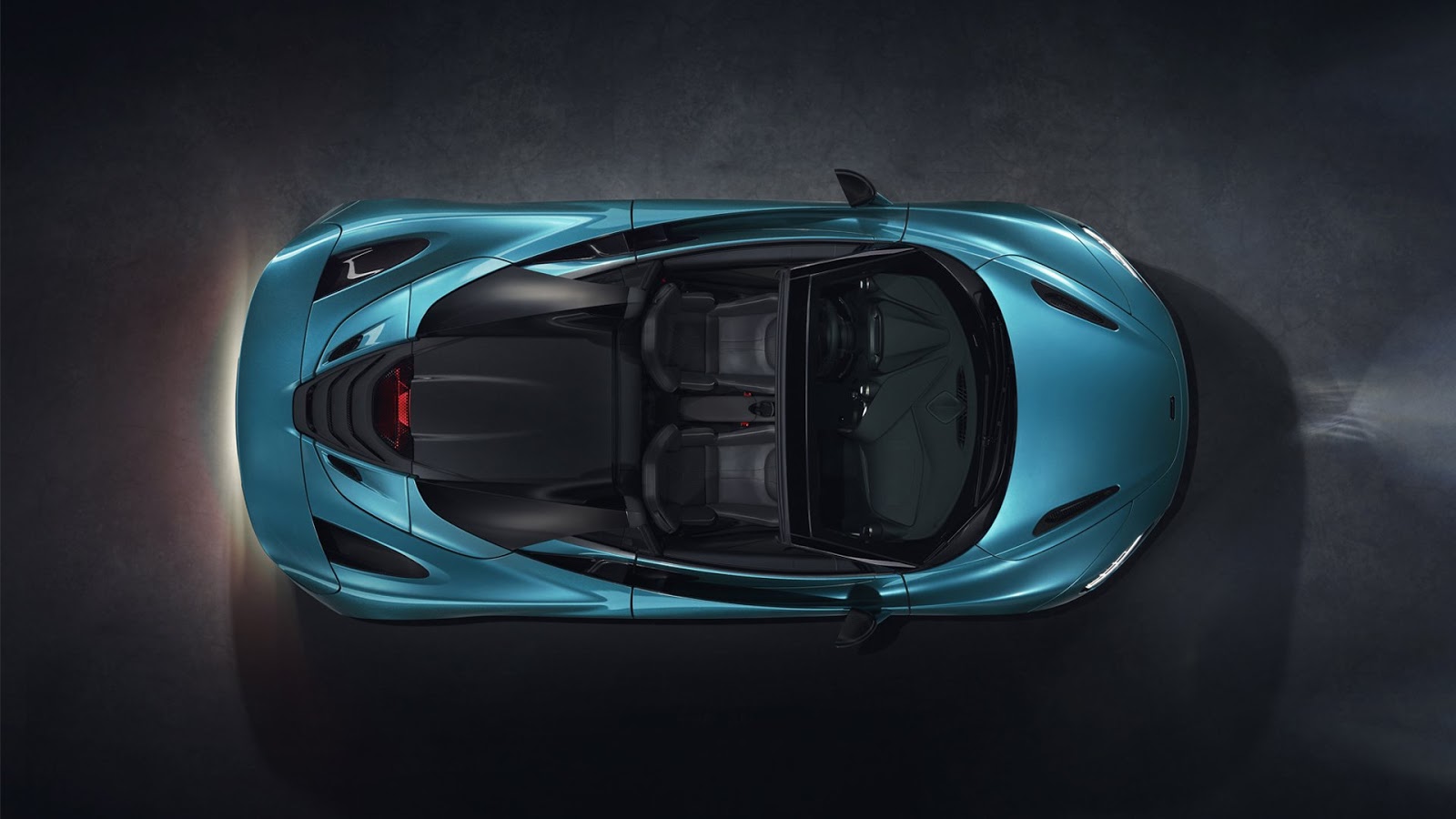
Both switches have 3 options, Comfort, Sport and Track. The clever thing about this system, is that the switches only adjust the settings if the "Active" button between them is pressed, and if not pressed, the car adjusts the settings accordingly, according to the driving style. The suspension, with electro-mechanical technology, adjusts each shock absorber individually four times a second, depending on the information it receives, and automatically tightens the rear shock absorbers during acceleration and the front ones during deceleration, to a degree depending on the forces applied, in order to make the car as stable as possible, not only in corners, but in any change in its kinematic state or direction. The whole of the car's behaviour is managed by "Proactive Chassis Control II", which uses a complex algorithm, part of a PhD thesis at the University of Cambridge, which collects data from various points and systems in the car, and makes the necessary adjustments to ensure the best possible driving experience.
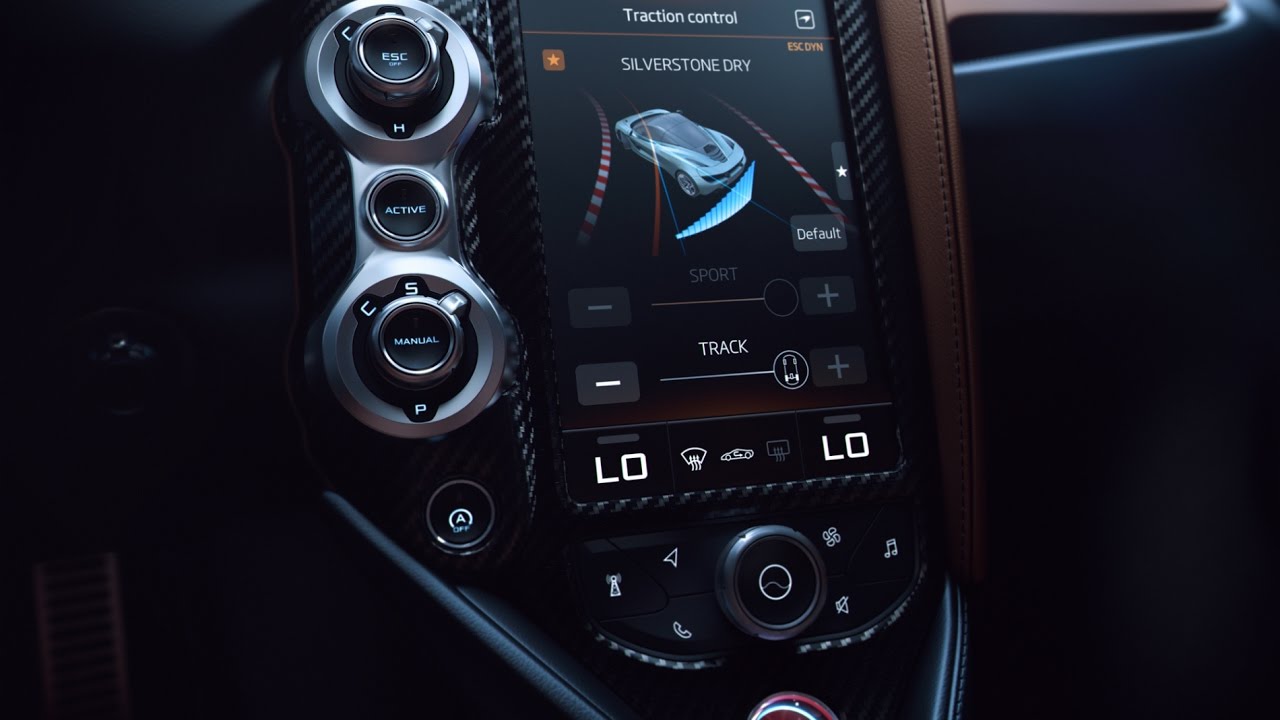
In the 720S Spider, McLaren achieved something that was theoretically not possible. The merging of two worlds. That of the open, comfortable car, with that of the closed, hardcore supercar. Can it be done? Yes. At McLaren it can be done, as the already rigid chassis of the Coupe is able to be used as it is in the Spider, with the loss in torsional stiffness being so small that it is not even noticeable, while the weight is increased so little that it is also not even noticeable in terms of performance and handling. So it's two cars in one, with perfect harmony and balance between them. It's the comfortable cruiser that you'll go for a leisurely drive, listening to your favourite music and enjoying the air coming in through the open roof, but it's also the hard-core supercar that will go on the track and take on all the competition, with nothing to envy or fear from it. I wonder, can a supercar ultimately be a little bit of everything, but nevertheless, top notch in its respective "role"? Yes. With the 720S Spider, it can be.
